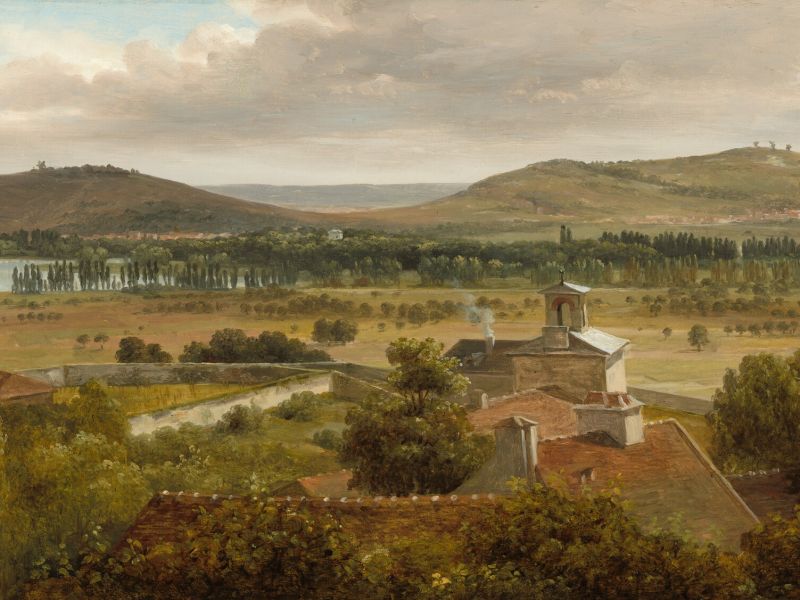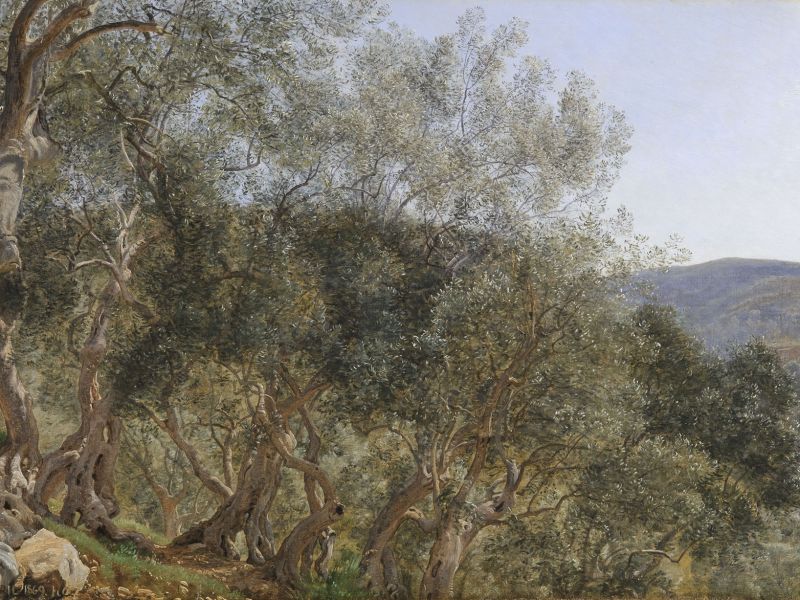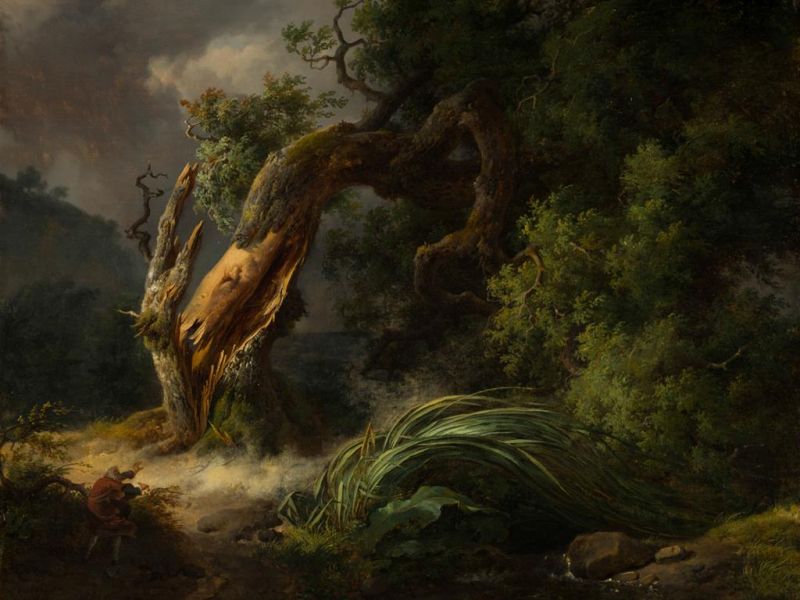Théodore Rousseau Panoramic Landscape near the River Moselle

Floodplain forests are now rare but were once found along the lower reaches of most European rivers. Because they occupied fertile land they were frequently cleared for agriculture. From the mid-eighteenth century, remaining floodplain forests began to deteriorate in response to river engineering practices such as dam construction and channelisation, which severely reduced the natural dynamics of rivers. European black poplar has declined the most among the floodplain species, a member of the Salicaceae family that relies on river dynamics to regenerate.
This painting shows a point in time when this transition in European rivers was taking place. On the far bank there is still a typical floodplain forest succession from the river’s edge, where the greenish-grey foliage of willows and young poplars can be seen, to the mixed poplar and hardwood forest behind. On the near bank the forest has been cleared, perhaps for grazing, but ironically rows of Lombardy poplars have been planted. These distinctive narrow trees are cultivars of the European black poplar, developed in Italy during the seventeenth century and often planted to create artificial linear features in the landscape.
Francine Hughes , Wetland ecologist
Anglia Ruskin University
Discover other viewpoints related to this
Sign up to our emails
Be the first to hear about our news, exhibitions, events and more…


